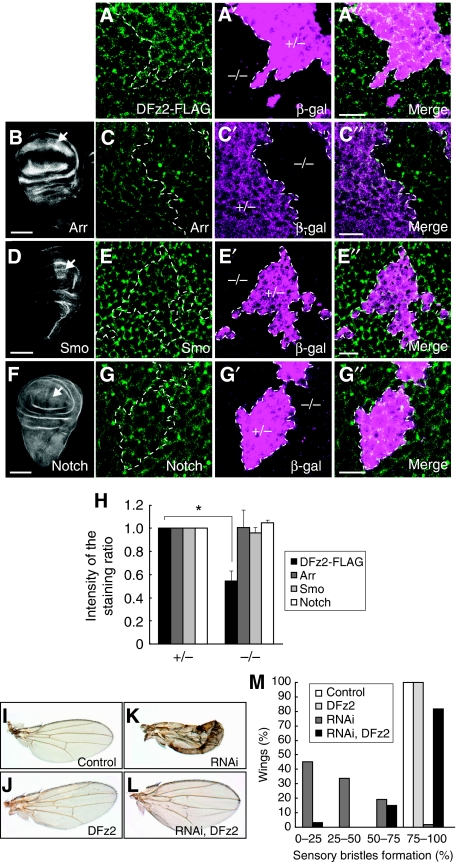Figure 6.
dUBPY is a selective regulator for DFz2 in the wing disc. (A–A″) Anti-FLAG staining (A) of a dUBPY knockout clone, which is negative for β-gal (A′, −/−), in the DFz2-FLAG wing pouch after a 2-h chase of heat shock-induced DFz2-FLAG. (B–G″) Anti-Arr (B, C), anti-Smo (D, E), and anti-Notch (F, G) staining of the wild-type wing discs (B, D, F) and dUBPY knockout clones (C, E, G), which are negative for β-gal (C′, E′, G′, −/−), in the wing pouch. A″, C″, E″, and G″ are merged images. Arrows in B, D, and F indicate regions that were analysed in the dUBPY knockout discs in C–C″, E–E″, and G–G″. Bars, 10 μm (A″, C″, E″, G″); 100 μm (B, D, F). (H) Anti-FLAG (DFz2), anti-Arr, anti-Smo, and anti-Notch fluorescence intensity in experiments in A–G″ was quantified in the control and dUBPY knockout areas. Relative intensity in the knockout area (−/−) to that in the control area (+/−) is shown (mean±s.d., n=12 for each staining, *P<0.02, t-test). (I–L) Control (I), DFz2-overexpressing (J), dUBPY RNAi (K), and dUBPY RNAi/DFz2-overexpressing (L) wings in adult flies. (M) Quantification of sensory bristle formation in wings in experiments in I–L. Percentage of wings with a different degree of sensory bristle formation is shown (n=33–62).

